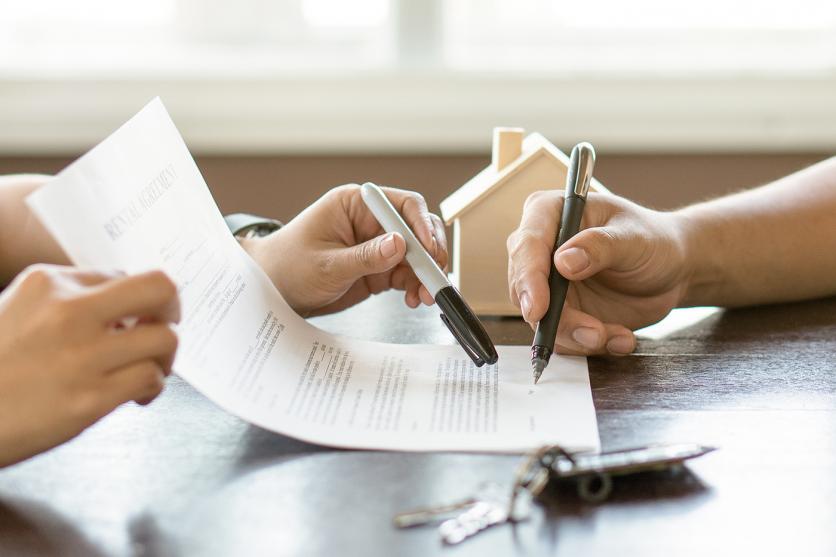Creating the home of our dreams often begins with the purchase of a plot of land. We can avoid a lot of annoyance later if we are aware of the information below.
One of the biggest projects in a family’s life is to create a new and comfortable home for them all. In most cases, this can mean building a house, and the process itself begins with the purchase of land. The location and features of the site, as well as local building regulations, will determine what to look for and what limitations to consider when designing our dream home.

So let’s see land purchase step by step!
Step 1: Find the plot
While we can filter the apartments and houses we are interested in beforehand through ads and photos, buying land is not so easy. Even if someone has a lot of imagination and sees photos or Google Maps, there is no way to miss a look at the plot. It pays to take a small trip to see if there is a high voltage line nearby, a structure that limits visibility, or if the area in which we envision our future lives is not noisy.
READ : plant operater training
Second step: Obtaining information from the municipality
Although the procedure for issuing building permits is no longer the responsibility of the municipalities, but of government offices, the office of the chief architect of the municipality will also be able to provide information on the conditions under which the site in question can be subdivided or other landscaping works carried out in accordance with local regulations. Building.

It is also worth asking the local government what long-term goals the local government has with a particular area, as the inclusion of a suburban plot or the reclassification of a building area is a factor that greatly affects the value of the plot.
It is already useful to know the rules and restrictions that need to be taken into account with regard to construction. What are the rules for the construction site within the plot, how many meters of the front garden, the side garden to leave when laying the house or how high the building can be built. In addition to the above, you can obtain information from your local government tax office about the local taxes that will be levied on the plot or house being built (such as land tax and/or building tax).
Step 3: Measure the plot
Before we buy a plot of land, if it is not fenced, and if it is fenced, it is worth having it formally measured with a surveyor to ascertain where the legal limit of the plot is. Neighbors should also be invited to this survey, especially if it can be assumed that the boundaries of the real plot and the boundaries of the legal plot are different.

The surveyor determines the boundaries of the site based on a survey that is now performed digitally. If there is a difference in the location of the fence compared to the boundaries of the legal plot, then the fence cannot be moved arbitrarily either, since ownership can be changed only by mutual agreement or by official decision.
Step Four: Land Development
If the fence is in the wrong place, or we are very lucky to be able to find a plot on which to develop two plots, or we want to merge two adjacent plots, we have to go through the formation of a procedure plot. This requires, above all, a change diagram based on the surveyor’s survey, which will be checked and approved by the cartographic department of the relevant land office.
Based on the clauseed schema, we have two options:
- We are looking for the municipality according to the location of the property and what is called We ask for an official pre-approval, which will be valid for 6 months. This permit from the relevant authority certifies that the land development we intend to carry out complies with the conditions specified in the local government ordinance. In such cases, the municipality checks, among other things, whether a mandatory minimum plot size has been maintained, whether the plot is on the border of a public or private road, etc. In possession of an approved layout drawing and authority permit, the land development permit must be requested from the Land Registry and submitted to the Land Registry Department of the Land Registry for registration along with the Land Development Agreement signed by all owners involved in the development of the land, notarized or signed by a lawyer.
- The second case is that it is also possible to require the land registry to carry out the above-mentioned steps within the framework of a joint land development procedure. In this case, all the above documents will be required, but the official permit will be obtained from the municipality by the land office, and all other documents will have to be prepared and submitted at the same time.

In practice, it is worth following the first procedure before buying a plot, since it will become clear whether the plot is feasible based on the prior permission of the municipality and we will get an answer to the question of whether it is worth buying the plot on the basis of the feasibility of our ideas.
Fifth step: check the facilities
Before buying a plot of land, be sure to find out what facilities are equipped with the property. Is there a water meter, an electricity meter inside the plot, has the property been drained, can gas be provided? These facts are also verified on the basis of documents, since connecting to a utility service does not always imply a simple rewriting of a name, since the introduction of a utility is subject to connection fees set by service providers.
Step 6: Services
Whether the land is mortgaged by any right under which the property owner is obliged to tolerate, for example, the passage of his property or the passage of a pipeline can be ascertained mainly from the title deed. In the Land Registry, the presence of these services is recorded on the title deed of both the prevailing plot of land and the offered plot of land.

In all cases, land registration of services requires a sketch by a surveyor and certified by the Land Registry, which accurately records the restrictions on the property. Be sure to ask the landlord about these items, or if they don’t have them, ask the land office about them. It will become clear from this document, for example, that the neighbor can cross the land only on foot, what kind of pipelines he has laid or will be laid and on which he has the right to build.
Online housing culture is on Facebook too! click Here, and like us for the latest interior design trends, creative ideas and the latest information about the magazine, as well as visit www.lakaskultura.hu, where we are waiting for you with new apartments and tips every day!






